
Asterias is a genus of the Asteriidae family of sea stars. It includes several of the best-known species of sea stars, including the (Atlantic) common starfish, Asterias rubens, and the northern Pacific seastar, Asterias amurensis. The genus contains a total of eight species in all. All species have five arms and are native to shallow oceanic areas of cold to temperate parts of the Holarctic. These starfish have planktonic larvae. Asterias amurensis is an invasive species in Australia and can in some years become a pest in the Japanese mariculture industry.
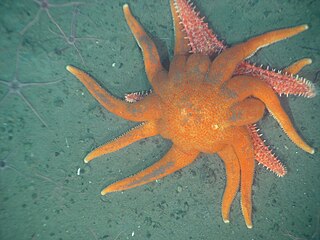
The Valvatida are an order of starfish in the class Asteroidea, which contains 695 species in 172 genera in 17 families.
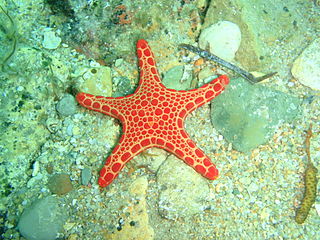
Goniasteridae constitute the largest family of sea stars, included in the order Valvatida. They are mostly deep-dwelling species, but the family also include several colorful shallow tropical species.
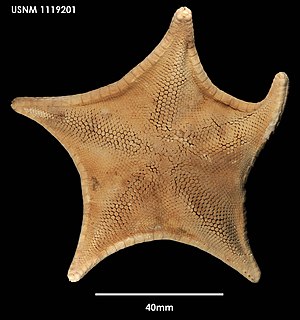
Ceramaster patagonicus, the cookie star, is a species of sea star. It is bright orange or yellow in colour. Its arms are short and it has no spines. It is a deep water species and lives on rocky sea beds. Its diet includes sponges.
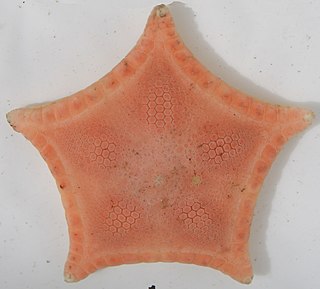
Ceramaster is a genus of cushion stars in the family Goniasteridae. The species in this genus have no arms. They live in deeper waters than most sea stars.

Henricia is a large genus of slender-armed sea stars belonging to the family Echinasteridae. It contains about fifty species.

Leptasterias is a genus of starfish in the family Asteriidae. Members of this genus are characterised by having six arms although five-armed specimens sometimes occur. L. muelleri is the type species. The taxonomy of the genus is confusing and Leptasterias hexactis seems to be a species complex. Some species brood their eggs.

The Solasteridae are a family of sea stars.

Solaster stimpsoni, common names Stimpson's sun star, sun star, orange sun star, striped sunstar, and sun sea star, is a species of starfish in the family Solasteridae.

Solaster dawsoni, the morning sun star, is a species of starfish in the family Solasteridae. It is found on either side of the northern Pacific Ocean. It has two subspecies:
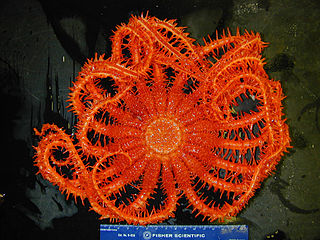
The Brisingidae are a family of starfish found only in the deep sea. They inhabit both the Atlantic and Pacific Oceans at abyssal depths, and also occur in the Southern Ocean and around Antarctica at slightly shallower depths.

The Freyellidae are a family of deep-sea-dwelling starfish. It is one of two families in the order Brisingida. The majority of species in this family are found in Antarctic waters and near Australia. Other species have been found near New Zealand and the United States.
Coronaster is a genus of the Asteriidae family of starfish.

Mediaster is a genus of starfish in the family Goniasteridae. It was circumscribed in 1857 by William Stimpson for M. aequalis, the genus's type species. Its junior synonym is the genus Isaster, which was circumscribed in 1894 by Addison Emery Verrill for the species now known as M. bairdi. Verrill himself synonymized the two genus names in 1899.
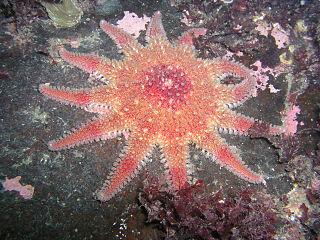
Crossaster is a genus of sea stars in the family Solasteridae.

Pteraster is a genus of sea stars in the family Pterasteridae.

Freyella is a genus of deep-sea-dwelling starfish in the order Brisingida.

Asterias rollestoni is a common starfish native to the seas of China and Japan, and not known from the far north or the American coasts of the eastern Pacific.
Asterias rathbuni is a starfish native to the Pacific coasts of Alaska in the United States and Far East Russia. There are two subspecies.
Asterias versicolor is a species of starfish native to the southern coasts of Japan southwards to the South China Sea.

















